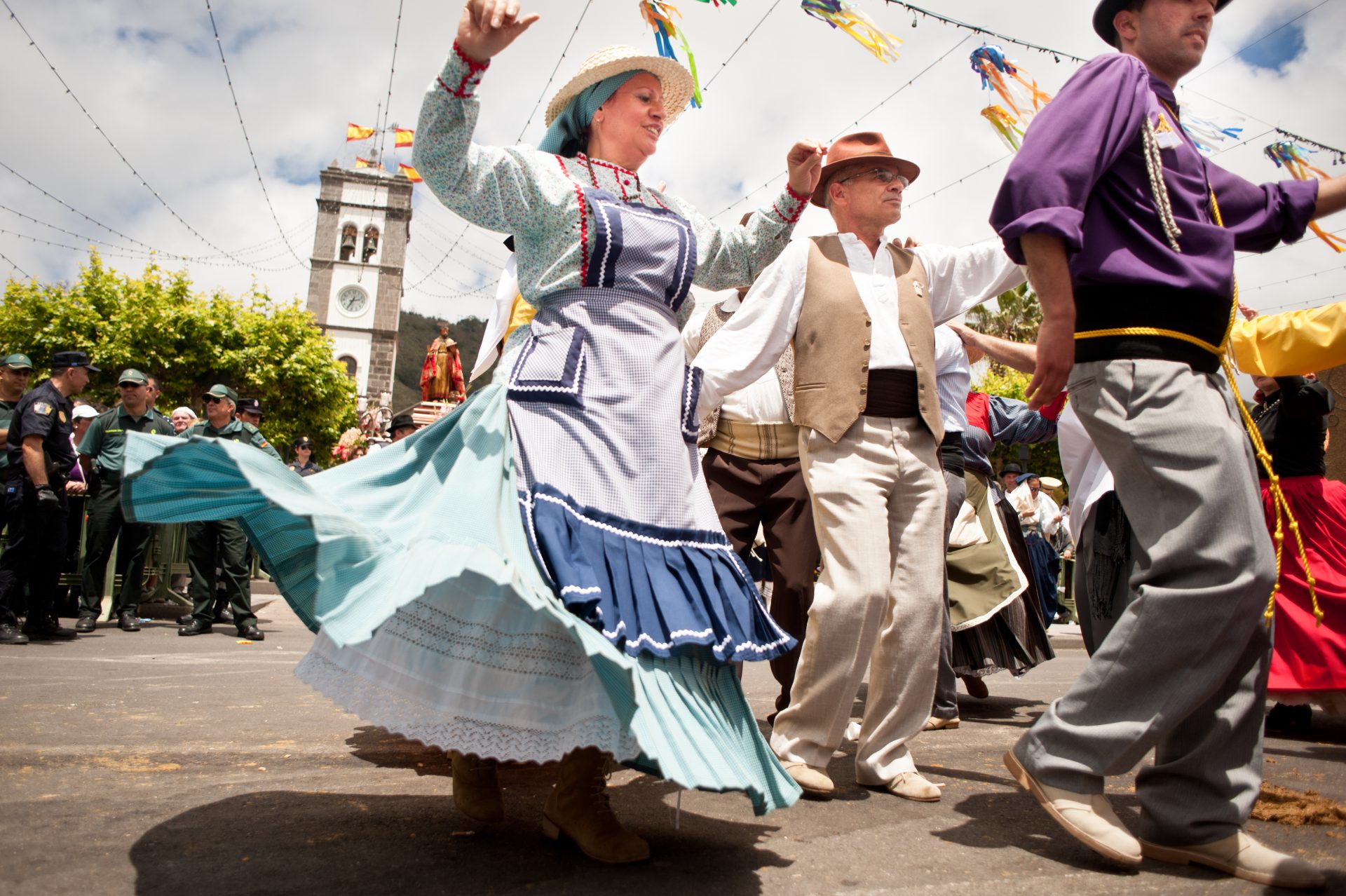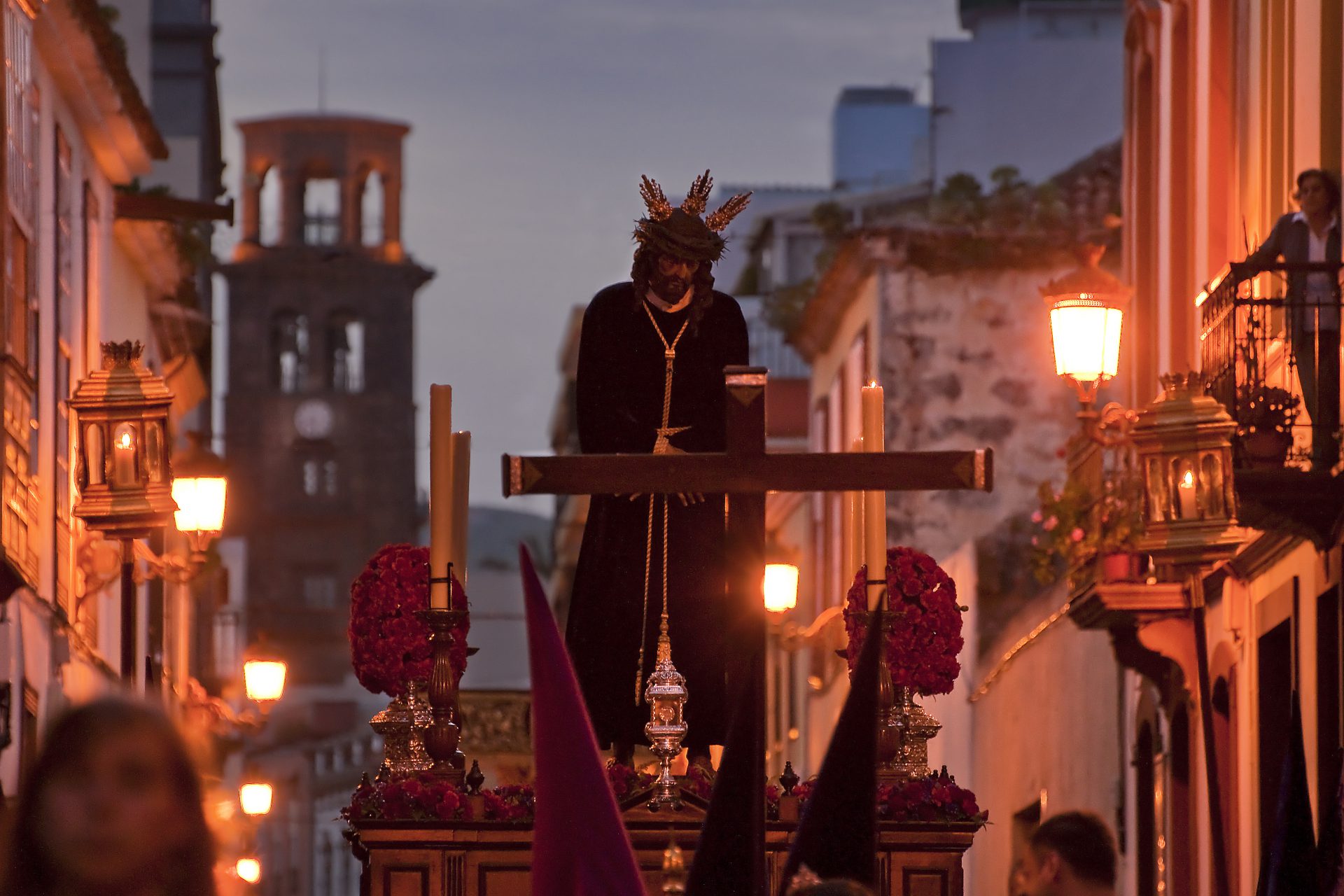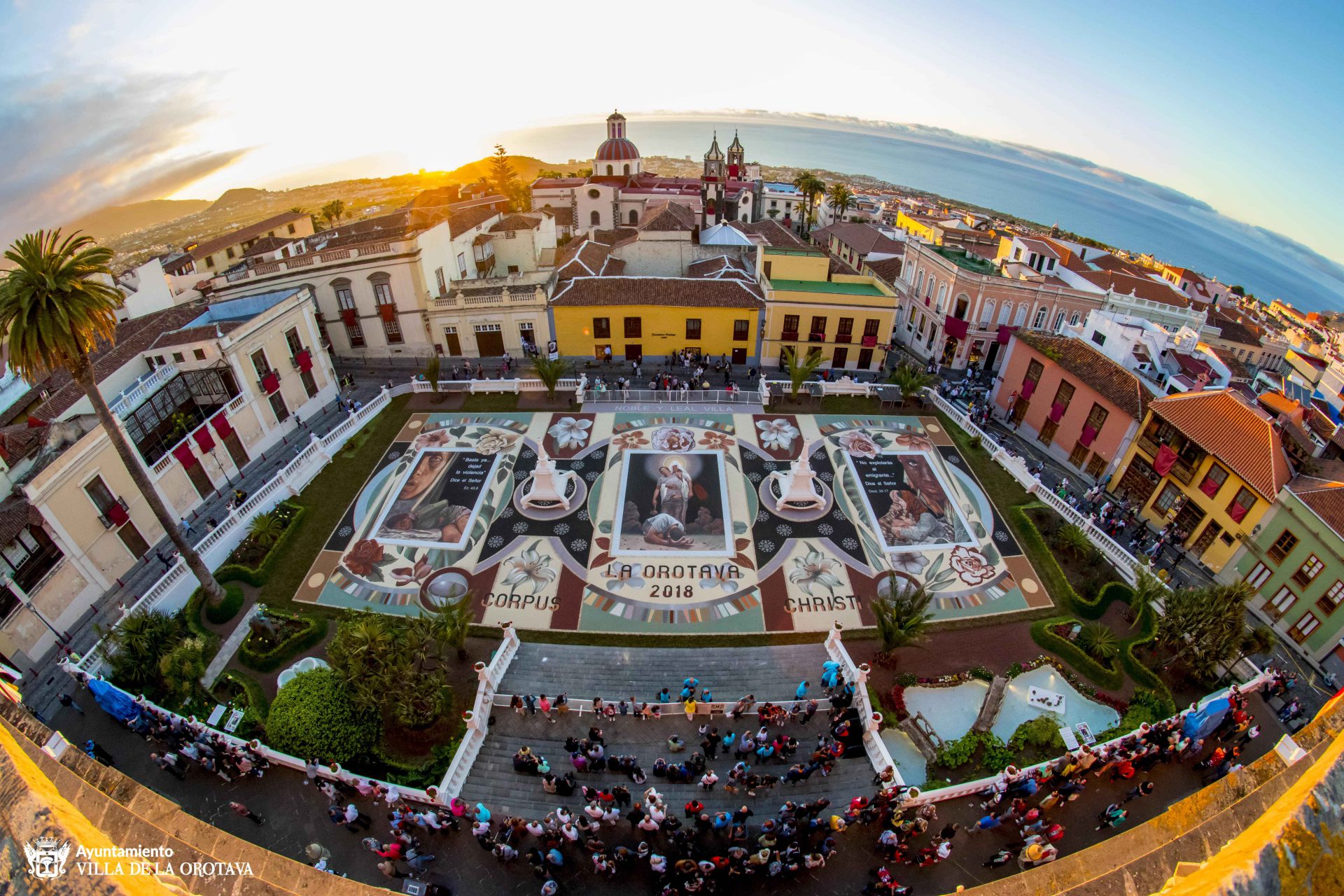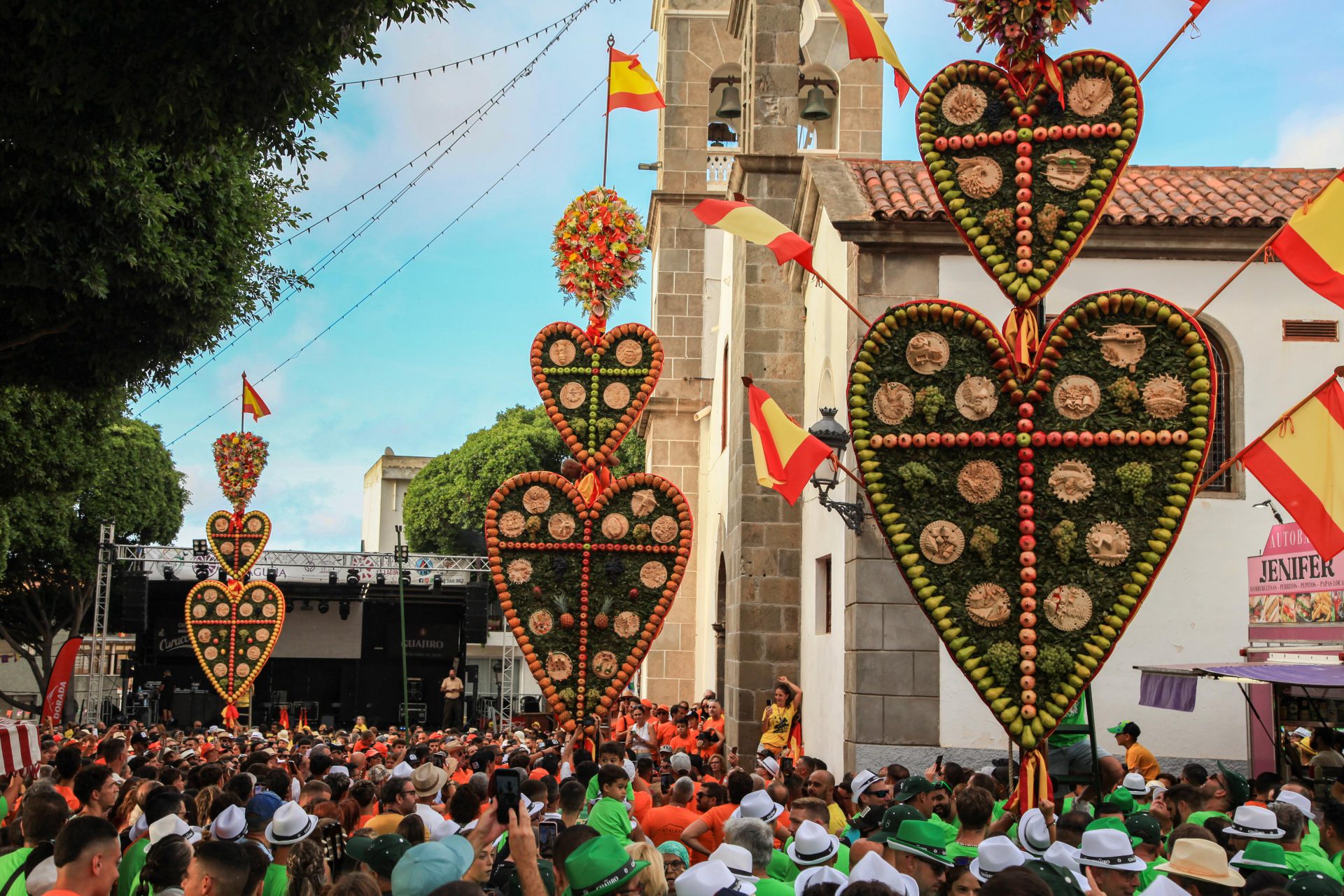If you want to experience the essence of Tenerife from its roots, you must soak up the cultural identity that, in some parts of Tenerife, occurs every day of the year

The island is popularly known for its beaches, good weather and nature parks. However, it is all that and much more. To discover the whole island, we propose some alternative plans typical for its locals and perhaps somewhat unknown to the occasional visitor. Plans with traditions that have been around for many years and that preserve the island’s culture.
Living Easter Week
Easter Week in Tenerife is a celebration deeply rooted in the island’s culture and tradition, where religion, popular fervour and historical heritage blend together.
One of the highlights of Easter Week in Tenerife are the processions in which the religious images, carefully decorated, are carried through the streets accompanied by groups of musicians. In San Cristóbal de La Laguna, for example, one of the oldest festivities in Tenerife is celebrated, with the processions on Maundy Thursday and Good Friday, with the participation of numerous guilds and brotherhoods. Another emblematic place to experience Easter Week on the island is La Orotava, where the processions mingle with the architectural beauty of its old town, declared a Historic-Artistic Site. Here, religious images travel through the cobbled streets, flanked by balconies adorned with quilts and tapestries, creating a unique scene that is well worth experiencing.
In addition to the processions, the island offers other religious activities and events, such as liturgical services in churches, holy music concerts and theatrical representations of the Passion of Christ.

Easter Week in Tenerife is not just about religion. It is also a time when you can enjoy the typical cuisine of the region, with traditional dishes, take part in outdoor activities, or take a dip in the sea.
Pilgrimages for everyone
In March, the Romería de Barranco Hondo pilgrimage is held in the municipality of La Candelaria, marking the start of the pilgrimage season on the island of Tenerife. If you happen to be visiting and come across one of these celebrations, you will recognise it because all the people attending, or at least most of them, will be dressed in typical Canarian clothes: magician’s costumes or peasant’s clothing.
Each pilgrimage is different and there are as many different ones as there are municipalities that hold them. If you like festivities, music, local cuisine and a good atmosphere, this is an experience not to be missed during your visit. In this parade of floats, you will not just find vehicles, but also folklore dancers, party-goers, animals such as donkeys and cows, and lots of food and drink. This gathering usually culminates in the town square, where the icing on the cake is a dance. If you want to find out if your visit coincides with any of these pilgrimages, check the dates of the most popular ones.
Carpets of volcanic sand
Imagine a giant painting on the ground decorating the street with colour and art. This is one of the oldest religious celebrations on the island of Tenerife: a living canvas. Families, associations and volunteers come together to make carpets of sand and flowers on the ground. Afterwards, the procession takes place in which the Santisimo is carried through the decorated streets on the shoulders of the faithful, accompanied by musical groups and religious representatives.

From early in the morning, the carpet-makers begin to work on the tapestries and floral arrangements. This event is held at the end of June in different towns on the island of Tenerife, including the municipality of La Orotava. It is said that the first Corpus Christi event in this locality took place in 1847 with a simple work consisting of a geometric drawing in Baroque style. Naturally, this initiative began to gain followers and has continued to evolve and grow. Now the carpets are gigantic and as complex as hyper-realistic paintings. The main carpet is usually created with volcanic sand of all colours, brought directly from Teide National Park, and occupies the entire surface of the square.
Tradition, boards and pots and pans in the north of the island
If you like adrenaline, you’d better make a note in your diary of this traditional event in the north of the island. One day a year, in November, the locals ride down the steep asphalted streets on wooden boards, with no more protection than helmets, knee pads and a pile of tyres welcoming them down the street. Although it is celebrated all over the island, Icod de los Vinos is one of the most popular places for the descent. The event is usually held in Calle del Plano.
However, this is not the only thing that happens on this magical night: the municipality of Puerto de la Cruz has its own noisy traditions. So, if on that day you start to hear a metallic noise in the streets, don’t panic: you will see neighbours carrying old objects such as pots, pans, frying pans and other kitchen utensils, which they join together with wire and drag along the ground, thus producing a deafening noise that can be heard all over the municipality. This is a tradition that dates back to the times when the wine-makers dragged barrels through the streets to the coast to wash them with seawater in preparation for storing the new harvest.
Last but not least: gastronomy. Another important aspect of the festivities of San Andrés is the tasting of typical Canarian products. Many municipalities organise gastronomic fairs and markets where you can taste and buy these local delicacies. The products you can find include roasted chestnuts, gofio and wine, among others.
Tejina and its hearts
One of the most colourful and striking traditions on the island takes place in the village of Tejina. With a weight of up to 900 kilos and a height of about 12 metres, cross-shaped structures are made, in which they form hearts decorated with fruit, flour cakes and flowers.

The event takes the form of a procession in which several of these pieces of different sizes are carried to the church square. However, we haven’t told you the best part yet: once the pieces are placed in the square, the participants begin to criticise each other’s hearts mischievously, laughing and joking.
The three main neighbourhoods of the village: El Pico, Calle Arriba and Calle Abajo, prepare their hearts, which they have been working on for days, to take them out onto the streets at the end of August. This is a festival declared to be of Cultural Interest as part of the festivities of San Bartolomé.
The island of Tenerife is a melting pot of cultures, traditions and celebrations that captivate its inhabitants and visitors alike. From the vibrant carnivals to Las Fiestas de la Cruz, a traditional celebration that takes place on the 3rd of May in different municipalities on the island and consists of the locals decorating crosses with flowers and fruit and then placing them in the streets of their town for everyone to enjoy. You also have Las Burras de Güímar, the Mascarita Ponte Tacón and the Fuegos de Mayo, the Mueca Festival and the Embarcación de la Virgen del Carmen, among others. Each festival is an opportunity to immerse yourself in Canarian culture and share unforgettable moments with the community.
Did you want more? There are many more traditions and cultural activities to enjoy during your visit. You can find much more information to expand on these and others on our website and in the cultural calendars.
